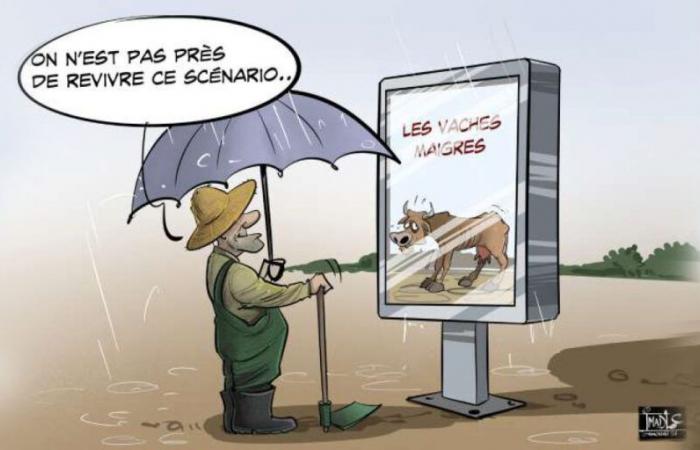This year, the rains arrived much earlier than in previous agricultural seasons. But the situation differs depending on the region. Dam reservoirs are improving slightly, even if they are still below 30%.
It is a slightly rainier start to the season than last year which is currently observed in the Kingdom. In some regions, recent rains have revived hope for the agricultural sector, hard hit by six successive years of drought. These mainly concern the northern and central regions, where we observed a fairly early arrival of precipitation, after exceptionally heavy rains recorded in the South-East during the summer season.
Torrential rains which also caused loss of life and significant material damage. In recent weeks, depending on the region, the weather has alternated between showers, strong gusts of wind and the return of the sun. Regardless, fall crops received better watering compared to certain years in previous seasons.
In the North for example, the plant cover is very visible in areas like Tangier and in several surrounding localities. But for the moment, no comment yet from the Moroccan Confederation of Agriculture and Rural Development (COMADER) for the update on farmer morale. The ministry is also observing the situation, knowing that everything will depend on the evolution of the rainfall situation.
Dams: the glass half full
That said, the other indicator of the rating to be assigned to this rainfall situation is linked to the reservoirs of the dams. And on this point, we also note a very strong regional disparity. But what must be remembered to date is that the filling rate of the dams is still very low, since on November 19, it stood at 29.30%.
For comparison, it was at 24% at the same time in 2023. It remains to be prayed and hoped that the current season can continue to improve compared to previous years, so that some catch-up can take place.
In this regard, the rains of recent days in Souss are likely to give hope to the agricultural world, especially since this region is hard hit by drought, to the point that even the water table is greatly impacted.
Coming back to the dams, it should be noted that at the national level, and in relative values, it is the Guir Ziz Rheris basin which displays the highest filling rate with more than 57%, ahead of those of Loukkos (47 %) and Tensift (45%). The lowest rates are recorded in the Souss-Massa (17%) and Oum-Rbia (5%) basins. During a response to an oral question in the House of Representatives on the current agricultural campaign, at the end of last October, Ahmed El Bouari, the new Minister of Agriculture, indicated that the reservoirs of dams for agricultural use had reached 3 .77 billion m³.
The government official specified that 70% of these reservoirs are concentrated in the Sebou and Loukkos basins. The minister said that the total area planned for irrigation in large areas reaches 400,000 ha, to which are added around 300,000 ha of small and medium hydraulics.
Measures
For the current agricultural season, several measures are being taken to limit the impact of the rainfall deficit as much as possible. But, overall, they particularly relate to the supply of production factors (seeds and fertilizers), the development of agricultural sectors, the management of irrigation water, agricultural insurance or even the financing and support of farmers.
Concerning seeds, the ambition is to reach 5 million hectares for the 2024/2025 campaign. The new minister announced the mobilization of approximately 1.26 million quintals of certified autumn cereal seeds (including 1.16 Mq by SONACOS) at incentive sales prices lower than 3 to 5% per year. compared to the previous agricultural season.
Abdellah Benahmed / ECO Inspirations






